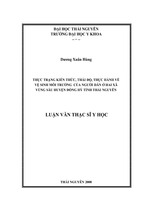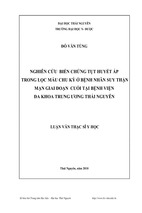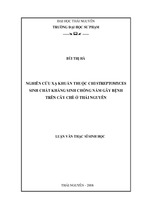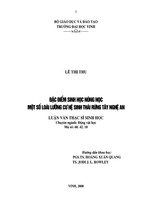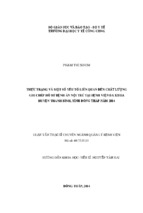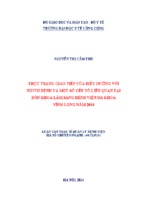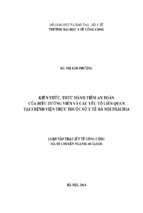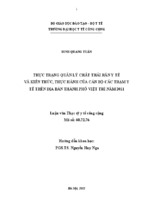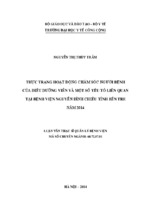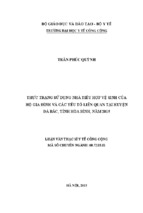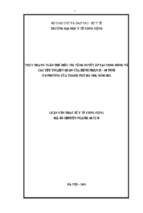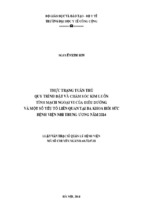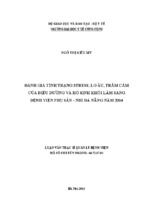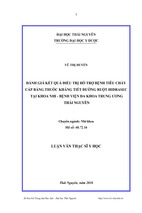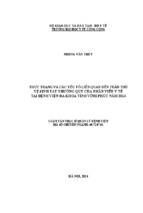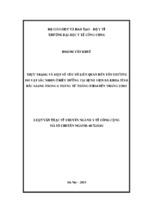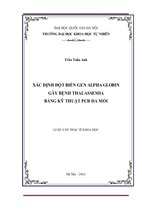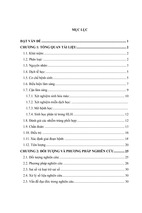Editors: Llewelyn, Huw; Ang, Hock Aun; Lewis, Keir; Al-Abdulla,
Anees
Title: Oxford Handbook of Clinical Diagnosis, 1st Edition
Copyright Š2006 Oxford University Press (Copyright by Huw Llewelyn)
> Fro nt o f Bo o k > Edito rs
Editors
Huw Llewelyn
Hock Aun Ang
Keir Lewis
Anees Al-Abdulla
Editors: Llewelyn, Huw; Ang, Hock Aun; Lewis, Keir; Al-Abdulla,
Anees Title: Oxford Handbook of Clinical Diagnosis, 1st Edition
Copyright Š2006 Oxford University Press (Copyright by Huw
Llewelyn)
> Fro nt o f Bo o k > Disclaimer
Disclaimer
Oxford University Press makes no representation, express or implied, that
the drug dosages in this book are correct. Readers must therefore always
check the product information and clinical procedures with the most up-todate published product information and data sheets provided by the
manufacturers and the most recent codes of conduct and safety
regulations. The authors and the publishers do not accept responsibility or
legal liability for any errors in the text or for the misuse or misapplication
of material in this work.
Editors: Llewelyn, Huw; Ang, Hock Aun; Lewis, Keir; Al-Abdulla,
Anees
Title: Oxford Handbook of Clinical Diagnosis, 1st Edition
Copyright Š2006 Oxford University Press (Copyright by Huw Llewelyn)
> Fro nt o f Bo o k > Dedicatio n
Dedication
For Angela
Editors: Llewelyn, Huw; Ang, Hock Aun; Lewis, Keir; Al-Abdulla,
Anees Title: Oxford Handbook of Clinical Diagnosis, 1st Edition
Copyright ©2006 Oxford University Press (Copyright by Huw
Llewelyn)
> Fro nt o f Bo o k > Preface
Preface
This book explains how to use a history, examination and preliminary tests
to arrive at a diagnosis in a transparent way. The diagnosis is a title for
what we imagine is happening to a patient physically and socially. It allows
us to anticipate what may happen next, how this can be influenced by
intervention and to share with the patient and colleagues in various
disciplines what we are doing.
The book allows the diagnostician to focus on symptoms, physical signs
and initial test results that are likely to lead to a diagnosis. This is based
on the principle that ‘diagnostic leads’ with short differential diagnoses will
be more informative than those features with long lists of causes.
Each diagnosis on a page resembles an entry from an evidence-based past
medical history. The reader scans down the page to see which of the
entries are compatible with the patient's findings so far. The compatible
findings can then be used as evidence for the diagnosis to be shared with
the patient or other members of the multidisciplinary team. Such
information can also be shared by using computer systems.
Readers are encouraged to be critical about the contents of the book, to
make changes in the Oxford Handbook spirit and to let us know of any
significant differences in opinion, or errors.
H L
Editors: Llewelyn, Huw; Ang, Hock Aun; Lewis, Keir; Al-Abdulla,
Anees Title: Oxford Handbook of Clinical Diagnosis, 1st Edition
Copyright ©2006 Oxford University Press (Copyright by Huw
Llewelyn)
> Fro nt o f Bo o k > So me impo rtant questio ns and answ ers abo ut this bo o k
Some important questions and answers
about this book
1. Why is this book different to other textbooks?
Most medical books describe a disease process and give physiological,
biochemical and other explanations for the causes and complications and
how these processes can be treated. They also describe what symptoms,
signs and test results occur. When a patient presents with new symptoms
and other findings, the reader must somehow work out which of all the
conditions that they have read about, the patient has. This book is
different. It lists the causes of findings that are the best clues (or ‘leads’)
and then outlines some findings, which when used in combination with the
lead, suggest the diagnosis with a reasonably high probability, or confirm
it. The number of findings is usually small for two reasons. The first
reason is that many findings occur often in many other diseases and are
therefore ‘non-specific’; it is only a few that form powerful predictors. The
second reason is practical—it is only possible to build up experience of
small combinations of findings because it is difficult to find many patients
with the same large combination of findings.
The diagnostic findings given in this book are based mostly on an
impression of what other doctors expect in the form of evidence for a
diagnosis during clinical discussions (or in an evidence-based past medical
history). Ideally these findings should have been shown to form the best
combinations that identify patients who respond well to treatment
compared to placebo in clinical trials. Failing this, they should be the
combinations recognised by convention as being the best (known as
diagnostic criteria). In the absence of both these situations one has to
resort to impressions of what most doctors would think reasonable.
The usefulness of ‘suggestive’ findings would also require more studies on
their frequency of occurrence in association with different diagnostic
criteria in various clinical settings (see the answer to question 16 and
p676).
2. Does this book claim to reveal all the
mysteries of diagnosis?
No; the way in which our minds work is a mystery and so also is much of
the diagnostic process. Diagnosis is based on the Greek to ‘know through’.
In the context of medicine, it is to see through the patient's symptoms and
other findings to imagine and understand what may be happening in terms
of current theories applied to medicine. The decision of what to do is made
by using the diagnosis to infer what will probably happen next and how the
process can be changed by various available interventions. Doctors learn
to do this by experience so that as they take a history and examine the
patients, it ‘dawns’ on them what may be going on, what may happen next
and what they should do. In essence, their diagnosis is a title or label for
what they are imagining in terms of current processes and future events.
The process is uncertain. Philosophically, we can only show that other
diagnoses or hypotheses are improbable and that the patient's findings are
probably explained by only one known diagnosis. However, there may be
some other processes not yet discovered by basic medical research, with
which the patient's findings are also compatible. Therefore, the outcomes
of actions based on a presumed diagnosis have to be monitored and the
diagnosis and decision revised if necessary. The process is often cyclical so
that the doctor is supplementing the patient's own reparative and
homeostatic feedback processes.
The diagnostician has to be alert to new concerns, symptoms and other
findings and has to be able to interpret them to arrive at new diagnoses
and decisions. Surgeons may have to do this as they are operating on a
patient; even what may appear to be a simple routine procedure may
produce surprises and require a quick, innovative and skilled response.
Diagnosis is thus bound up with ‘clinical management’. Doctors depend on
such rapid intuitive processes to get through their day with the speed and
efficiency required of them.
In some cases a doctor will listen to the patient, conduct an examination
and decide what to do (e.g. giving a pain-relieving drug, pressing on a
bleeding wound or sending the patient quickly to hospital) without
consciously thinking of a diagnosis. It is only on reflection that he or she
will offer an explanation and describe what was imagined subconsciously at
the time the decision was made. This is often described as ‘empirical’
medicine.
3. What approach to diagnosis does this book
describe?
In addition to our private inner thoughts and diagnoses, we have to use
transparent thought processes to explain to others what we are doing. This
is how we explain to patients what we think is wrong, why and what
should be done. It is also central to team work involving members of other
disciplines who have to help to provide the medical care arising from the
various diagnoses that apply to a patient. It is also essential when handing
over care to other teams, which is an increasingly prominent feature of
modern medicine.
So, however mysteriously the mind works, the decisions, diagnoses and
the evidence also have to be communicated very clearly to doctors, nurses
and others in the team, the patients and their supporters. The diagnosis
may also have to be coded for clinical audit, activity analysis and payment.
The evidence and reasoning has to be communicated in order that others
can understand and if necessary continue the thought processes. This is
the public, explicit form of diagnosis and decision making as opposed to
the private, rapid, intuitive process that often leads to diagnoses and
decisions in the first place.
The explicit diagnostic thought process can also be used to arrive at the
diagnosis in the first place. This has to be done very often by those with
little experience but not infrequently by those with wide experience when
they inevitably meet new situations. The book describes how this is done.
4. Do doctors traditionally use the transparent
methods in this book?
Yes, when they write out a traditional ‘Past Medical History’ (PMH). There
is a current tendency to only provide a list of the past and current
diagnoses and problems. If this list is wrong then mistakes can be
perpetuated if other doctors copy it uncritically. However, a traditional
PMH is based on ‘particular’ evidence from that ‘particular patient’. This
means that each diagnosis is a heading, which is followed by an outline of
the particular patient's evidence and then the management (see p657).
Other doctors can check its accuracy more easily than a bare list. The
following is an example:
Non-ST elevated myocardial infarction in October
2005
Evidence
Chest pain for 4 hours on 1/10/05, Troponin 2.7 u/l 1/10/05, ECG: no St
elevation but inverted T waves in leads V4 to V6 and AVL on 1/10/05.
Management Analgesia, oxygen, low molecular
weight heparin, cardiac monitoring and cardiac
rehabilitation protocol. Secondary prevention
regimen started 2/10/05.
The PMH can also be set out in table format1 , especially when it is being
drafted:
Non-ST
elevated
myocardial
infarction
in October
2005
Evidence: Chest pain for 4
hours on 1/10/05,
Troponin 2.7 u/l 1/10/05,
ECG: no St elevation but
inverted T waves in leads
V4 to V6 and AVL on
1/10/05.
Management: Analgesia,
oxygen, low molecular weight
heparin, cardiac monitoring
and cardiac rehabilitation
protocol. Secondary
prevention regimen started
2/10/05.
Each page in the book is represented by a ‘lead’ such as chest pain. The
differential diagnoses on each page are the possible diagnoses and
evidence that may be written later in the PMH when the diagnosis is
finalised. The reader can scan down this page to see which of these
diagnoses and their evidence are compatible with the findings so far.
5. Is there is a simple concept on which
transparent diagnosis is based?
Yes—the idea of small predictive combinations of information. If a group of
patients with a combination of features turn out to have some diagnosis
with a known frequency, then if more features are added, the frequency of
the outcome in the new combination will increase, decrease or remain the
same. However, the original frequency will represent the average of the
new frequencies in the groups formed by subdividing the original group.
Thus, a small combination of features that predicts an outcome with a very
high frequency can be very useful.
This book outlines findings that form useful combinations for diagnosis and
thus predict the outcome of treatment. It does not specify the detailed
logical structure of the combinations. Before this can be done, it would be
necessary to conduct systematic studies during day-to-day care at the
same time as data is collected for audit. Thus all the ‘total evidence’ of
positive and negative findings is taken into account but ‘central evidence’
is identified within it, which is used to summarise the ‘total evidence’ 2 . If
different combinations of ‘central evidence’ point to different diagnoses,
then these may be simultaneous or differential diagnoses.
6. What are ‘leads’ and how are they used?
A ‘lead’ is a finding associated with a limited number of conditions and
which is thus easier to investigate. The titles of the pages of the book
represent such ‘leads’. If a healthy student has experienced a symptom
that resolved spontaneously, then it is unlikely to be a good lead. An
unusual or disturbing symptom or physical sign may well be a good lead.
In the same way extreme results of measurement are often good leads.
If the reader discovers a good ‘lead’ when taking the history or examining
the patient, then by turning to the appropriate page, he or she will be able
to scan down the page to see if the patient had other features that form a
combination that point to one of the diagnoses.
If the patient's findings are compatible with a number of different
predictive combinations, then these will represent the differential
diagnoses (provided that they are also capable of causing the presenting
complaint). The approach of assembling a combination of findings by
selecting items of information that occur commonly in one cause but rarely
in others rarely is the probabilistic version of ‘logic by elimination’ 3,4,5 .
‘Leads’ have also been referred to as ‘pivots’ 6 .
7. At what points in a medical career is this book
useful?
This is a book and an approach that can be used throughout a medical
career. It can be used by students beginning the medical course to learn
the principles of interpreting clinical information. It can be referred to at
any time during the medical course when ‘clerking’ patients or when
tackling diagnostic exercises on paper.
This handbook is also designed to help doctors to deal with problems
clearly by using a logical and flexible approach when they are on strange
territory. More importantly, it also helps students and doctors to defend
their diagnoses and decisions and if necessary, to help them to explain
their reasoning to patients, nurses and other doctors verbally or in
evidence-based past medial histories.
A traditional current past medical history that summarises diagnostic
evidence for others (see p657) would be very helpful when handing over a
patient's care to another team, especially when transferring a patient
between specialities with mutually unfamiliar conventions of diagnostic
evidence. Such an approach would also reduce unnecessary duplication
and wasting of resources and might be used on computer systems for
health care.
8. In what situations can this book be used?
The book can be used in a number of situations. It can be read after taking
a history, examining a patient, arriving at diagnoses and a management
plan. The latter will include a ‘positive finding summary’ or problem list,
proposed investigations and initial treatments. The positive findings can
then be looked up in this book, beginning with most striking or severe, to
see if you have considered important causes and ways of confirming them.
It can be used for problem based learning. Thus, after trying to solve a
problem without the aid of this book, use this book for a second attempt.
Make your own notes on the blank pages if you find that a cause or
important finding has not been mentioned. As with other Oxford
Handbooks, we would welcome suggestions. Some diseases are only
common in examinations (partly because they provide physical signs that
are reliably stable over many years). They are often rare in clinical
practice except in specialised departments.
9. How does the structure of the book work?
The main part of the book describes the findings that can emerge at each
step of the history and examination and as a result of doing the
preliminary tests. Each page will describe the list of the main differential
diagnoses to be considered for a lead that is starting point for the
diagnostic reasoning process. Alongside each diagnosis there is an outline
of the typical evidence that suggests the diagnosis with sufficient
probability to justify doing confirmatory tests. It may then outline the
typical results of doing these tests to provide reasonable evidence to
confirm the diagnosis. There will be some duplication in that these details
will be repeated for the reader's convenience each time the diagnosis is
listed as a cause of a symptom or sign.
10. How can the book help with revision?
When you read the book, imagine that you have come across a patient
with the finding(s) forming the title for that page. Cover the differential
diagnoses on the left hand side of the page with your hand or a book-mark
to see if you can predict the diagnosis from reading the findings on the
right hand side of the page. This is the direction in which your mind should
be working when you are trying to help your patients by solving their
medical problems. You can then read the whole page for an ‘overview’. You
should always try to recall what you know already about something before
reading about it, in order to learn in an integrated way.
11. Can a transparent diagnostic approach
improve the diagnostic accuracy of an
experienced doctor?
It is a common experience that if we try to give a carefully reasoned
justification for an intuitive opinion, especially by writing it down, we may
find that we cannot justify it easily and will reconsider our opinion.
Conversely, if our explicitly reasoned justification confirms our intuitive
opinion, then we will feel more confident in its success. This is illustrated
by what happened when the data assembled by the late Professor Tim de
Dombal was analysed. The surgeon was ‘correct’ in his intuitive diagnosis
235/300 = 78.3% of the time and a transparent logical approach using
small combinations of findings was correct 230/300 = 76.6% of the time.
However, the surgeon and transparent logical approach agreed about the
diagnosis in 221/300 of cases. When there was agreement in these 221
instances, the diagnosis was correct in 200/221= 90.5% of cases7 .
12. How can the reasoning used in this book
reassure patients?
When patients see a new doctor, they are asked to give an account of their
past medical history and have some responsibility for being able to do so.
The doctor often has to struggle to work out what is going on by wading
through voluminous notes, computer print-outs and electronic records. It
would be so much more reassuring for the patient if the preceding doctor
had given the patient a typed, up-to-the-minute traditional evidence based
PMH to hand to the next doctor who would be able to look up the evidence
used easily by referring to the date at which it was discovered. It is now
recognised good practice to give copies of letters to patients. A typed
current PMH would help patients to understand such letters by putting
them in context. The typed PMH would also act as a focus for giving logical
explanations to the patient, allowing the patient to make informed choices
and thus to give a more enlightened informed consent.
There is often concern that patients are losing confidence in the medical
profession. However, if a doctor is prepared to give a written evidencebased past medical history to patients, then the doctor is effectively
inviting those patients to show this explanation to other doctors if they
wish. This degree of transparency makes it difficult to hide errors and so it
would be sensible to produce such current evidence based past medical
histories by referring to example past medical histories or standard text
based on locally validated guidelines. If what is proposed is at variance
with the guidelines, then the original diagnosis, evidence and management
can be reconsidered. This would allow the conclusions to be ‘audited’
before they are finalised and communicated to the patient.
13. Can this approach improve the use of ‘clinical
guidelines’?
Guidelines can be re-written as a series of anticipated ‘Past Medical
Histories’ along the lines described in this book. After a diagnosis has been
made and the treatments started, a current PMH can be written as soon as
possible. This PMH can then be compared with a manual of guideline-based
PMHs. As this is done, decisions are ‘audited’ against the guidelines
immediately, when there is still time to reconsider a decision before much
damage has been done by any errors.
The guideline-based PMH can also be stored as word-processed standard
texts. A current past medical history can be written by copying the
standard text into the patient's PMH and then edited. Again, as this is
done, decisions are ‘audited’ by the decision maker against the guidelines
immediately.
14. How does this approach relate to diagnostic
algorithms?
The suggestive and confirmatory evidence under each diagnosis represents
the findings that would have been chosen by following the path down a
diagnostic algorithm in order to arrive at the diagnosis. However, instead
of locking the reader into a fixed sequence, this book allows the reader to
scan the different diagnoses and recognise which findings on the page best
fit those of the patient. The confirmatory evidence should be compatible
with only one diagnosis.
15. How comprehensive is the information about
each diagnosis?
There is not enough space in a handbook of this kind to describe all the
combinations of evidence that might point to a diagnosis. Therefore, each
page describes ‘some’ of the differential diagnoses and for each of these,
an outline of ‘typical’ findings that are suggestive and confirmatory. This
provides a start to which further information can be added by the reader
in the Oxford Handbook spirit.
The diagnostic ‘causes’ of a lead are usually listed in the order of their
frequency in those patients with the ‘lead’. (Sometimes they are grouped
together because of causal similarity e.g. into ‘cardiac causes’ and not in
an order of frequency.) A major factor in determining this order is the
prevalence of those with the diagnosis in the overall study population.
Therefore, the order of the diagnoses on the page may vary between
clinical settings. Readers should try to insert the order number of the
diagnostic causes in terms of probability in their own clinical settings.
16. Why can the clinical setting affect diagnostic
probabilities?
The probability of a diagnosis such as NSTEMI given the presence of some
findings such as chest pain with T wave changes is by convention the same
as the frequency of patients with the diagnostic criterion in a group of
patients with the findings. In some settings there may be additional
patients with another mimicking condition that also causes the same
findings. This means that there will be more patients in the study
population with the findings of chest pain with T wave changes and fewer
of them will have a NSTEMI, illustrated by the following example.
If 90 patients in a study population have aNSTEMI and 30 in the
population have a combination of the three features of NSTEMI with chest
pain and T wave changes then the ‘likelihood’ of getting these three
features in those patients with a NSTEMI is 30/90 = 33%. It is also the
likelihood of seeing the two findings of chest pain and T wave changes
because we know already of course before we make this likely prediction
that they have a NSTEMI.
If 40 different patients in the population have the combination ofchest
pain and T wave changes and that 30 have a combination of the three
features of NSTEMI with chest pain and T wave changes, then 30 out of the
40 = 30/40 = 75% of patients with this combination in the study
population will have a NSTEMI (and obversely, 10 out of 40 = 10/40 =
25% do not). So the combination of chest pain and T wave changes
predicts a NSTEMI with a probability of 30/40 = 75% or 0.75.
If in a different clinical setting, the total number of patients in the
population with chest pain and T wave changes were 60 (instead of 40),
then the combination of chest pain and T wave changes would predict a
NSTEMI (and chest pain and T wave changes that we know before making
the prediction) with a probability of 30/60 = 50% or 0.5.
We can repeat the above ‘verbal reasoning’ by using simple arithmetic. If
the total study population in the above example was 1000, then the
‘prevalence’ of the 90 patients with NSTEMI in the population of 1000
would be 90/1000 = 9%. We know from the above ‘verbal reasoning’ that
the likelihood of finding patients with the combination of chest pain and T
wave changes in those with NSTEMIis 30/90 = 33%. If the prevalence of
the 40 patients with the combination of chest pain and T wave changes in
the population of 1000 is 40/1000 = 4%, then chest pain and T wave
changes predict NSTEMI with a ‘predictive’ probability of:
However, if in the different clinical setting, the prevalence of patients with
the combination of chest pain with T wave changes is 60 patients out of a
population of 1000 is 60/1000 = 6%, then this combination of findings
predicts NSTEMIwith a ‘predictive’ probability of: 90/1000 × 30/90 ÷
60/1000 = 30/60 = 50%
This simple arithmetic relationship between the ‘predictiveness’ and the
other proportions is known as ‘Bayes theorem’ (see p676).
17. Is the information in this book evidencebased?
Each diagnosis in the book is followed by typical evidence of the kind
usually mentioned in a traditional PMH. This is the ‘particular’ evidence
that applies to a ‘particular’ patient with that diagnosis. In this sense, the
information in the book is all ‘evidence-based’. However, there is also
scientific evidence based on observations made on groups of patients. In
clinical medicine, most of this is about the efficacy of treatment, rather
than diagnostic tests.
Most general scientific evidence about symptoms, signs and tests is based
on measuring the ‘sensitivity’ and ‘specificity’ of findings. These indices
describe a finding's ability to predict the result of the confirmatory ‘gold
standard’ test. However, there is little scientific evidence in the medical
literature on the validity of the tests that are used as gold standards and
which are the best for this purpose. For example we do not know whether
the 24 hour albumin excretion rate is a better ‘gold standard’ than the
albumin-creatinine ratio for diagnosing ‘Incipient diabetic nephropathy’
and thus predicting which diabetic patients with a controlled BP go on to
develop nephropathy within 2 years (see p673).
There are two levels of evidence given for each diagnosis: ‘suggestive’ and
‘confirmatory’. Confirmatory evidence should be validated with clinical
trials that allow the effect of different entry criteria for treatment efficacy
to be assessed. We can then assess the ability of other findings to predict
the presence of ‘gold standard’ selection criteria using indices such as
‘sensitivity’ and ‘specificity’.
It is possible to cite particularised evidence for all diagnoses and decisions
in medicine. This is also possible for alternative medicine such as herbal
remedies and homeopathy. The patient can be asked what an alternative
practitioner had said by way of explanation (the diagnosis) and the
evidence. The evidence would include the original complaint, how the
diagnosis was confirmed and how the original symptoms were progressing.
It is also important to identify the alternative treatments, as they may
interact with conventional treatments. Having identified such alternative
diagnoses and treatments, the patient can also be offered other diagnoses
and treatments of conventional medicine based on careful general
scientific evidence and invited to choose.
18. What is meant by ‘facts’, ‘opinions’ and
‘evidence’ in the book?
Evidence is an account of real events that supports what we believe. It is
made up of ‘facts’. Thus, facts are also accounts of real events. Real events
are transient and immediately become memories that are easily forgotten
or distorted. Evidence is usually shared with others and because of this it
has to be recorded carefully using conventions that other people will also
accept. One of these conventions is that the record of a fact must bear a
time and date so that it can be corroborated (e.g. by questioning other
witnesses). If such details are omitted, then this may arouse suspicion
even if there is no need to seek corroboration. In many cases a listener
would judge that the probability of corroboration or replicating the finding
would be high.
Most evidence takes the form of contemporaneous notes or printed
numerical values from a measuring device. In other cases, a finding is
preserved e.g. an X-ray, a photograph, or a video recording with sound.
However, all these methods are subject to error or some other distortion
and the method of detection and recording has to follow appropriate
conventions if they are to be accepted by others. In this book, ‘evidence’ is
described as being ‘suggestive’ or ‘confirmatory’ of a diagnosis and when it
is applied to a real patient, will have to bear a date or time. Evidence
about a single patient may be termed ‘particular’ evidence, whereas
evidence about a group of patients may be termed ‘general evidence’.
The principle of replication also applies to general evidence. For example,
1/77 (1.3%) of normative diabetic patients taking placebo with an albumin
excretion rate (AER) starting between 20 and 40 µg/minute had
nephropathy within 2 years8 . This would be ‘general scientific evidence’.
If we took the pile of 77 records from the study we could simulate repeat
studies by selecting a set of notes at random from the pile, examining,
returning it and doing this 77 times. If a large number of such ‘simulated
studies’ were done, then from the binomial distribution there would be a
99.7% chance of finding nephropathy in 0/77 or 1/77 or 2/77 or 3/77 or
4/77 of patients with a controlled BP in different simulated studies (i.e.
from 0% (0/77) to 5.2% (4/77)). There is thus a 99.7% chance of
replicating the finding of 1/77 by a repeat result being between 0/77 and
4/77 inclusive. By comparison, the standard 95% confidence interval for
1/77 is 0.03% to 7.02% and the 99% confidence interval for 1/77 is
0.01% to 9.37%. However, the probability of replication between two
limits are more similar to the percentage ‘confidence’ interval if the
numbers in the study are high and the observed result is near to 50%.
A fact is an account of an observation but an opinion is a prediction about
something that has not yet (or even cannot) be seen. If an opinion can be
checked by observation, it can be founded on evidence (it is
‘substantiable’). If it can never be observed it cannot be founded on
evidence (it is ‘unsubstantiable’). An opinion can thus be ‘substantiated’ if
it can be based on past evidence. For example, if an individual patient's
AER is between 20 and 40µg/minute, then an opinion that such a diabetic
patient with a controlled BP is unlikely to develop nephropathy would be
well founded or ‘substantiated’ by the ‘fact’ that of 77 such past patients
only one went on to get nephropathy in a particular study.
19. How do these ideas relate to statistical and
other models of diagnosis?
Statistical and other mathematical methods (many based on Bayes
theorem) generate a value much like a diagnostic test. These may be
calculated estimates of some biological value e.g. a ‘calculated’ glomerular
filtration rate, a diagnostic score or an estimated probability. AlI these
‘numerical outputs’ of a calculation can be treated in the same way as
direct measurements by calibrating them against the frequency of some
outcome (e.g. the proportion who progress to requiring dialysis within 2
years—see figure on p673). The numerical outputs could then be
incorporated into the ‘suggestive’ or ‘confirmatory’ evidence for the
diagnosis.
Decision Analysis 9,10 is essentially a process that estimates the result of a
detailed therapeutic clinical trial on a hypothetical group of patients in a
transparent way when a real detailed trial is not available or
impracticable. The analysis is usually applied to an individual patient who
thus is identical to all those in the hypothetical group. The approach uses
available estimates of outcome frequencies in the medical literature from
related studies and also estimates from the patient of the range of
personal well-being that should be gained from each outcome. The analysis
involves calculating the average degree of well being for each treatment
outcome in a transparent way. Doctors may do this for an individual
patient by estimating the outcome of such a hypothetical trial without
making calculations. This approach is not covered in this book.
20. How might the approach fit in with electronic
patient records?
An electronic patient record (EPR) can overload the user with information
just as easily as voluminous paper records. A current or latest evidencebased PMH could act as an introduction to the contents of a patient's
records, whether they are electronic or paper-based. By referring to the
time and dates of a current PMH, then the user would know what
information to focus upon to follow the reasoning process of the person
who originally entered information into the record.
The ‘current PMH’ might in future be built into an EPR. Details of test
results in an electronic current PMH might be accessed using hypertext
connections. It could also be typed out and given to a patient to show to
the next doctor or copied into the patient's own electronic health record,
such as ‘HealthSpace’, e.g. on http://www.healthspace.nhs.uk.
1 Llewelyn D.E.H., Ewins D.L., Horn J., Evans T.G.R., McGregor A.M.
(1988). Computerised updating of clinical summaries: new opportunities
for clinical practice and research? British Medical Journal, 297; 1504-6.
2 Llewelyn, D.E.H., (1988). Assessing the validity of diagnostic tests
and clinical decisions. MD thesis. University of London.
3 Llewelyn D.E.H. (1975). A concept of diagnosis: A relationship
between logic and limits of probability. Clinical Science and Molecular
Medicine, 49; 7.
4 Llewelyn D.E.H. (1979). Mathematical analysis of the diagnostic
relevance of clinical findings. Clinical Science, 57(5); 477-9.
5 Llewelyn D.E.H. (1981). Applying the principle of logical elimination
to probabilistic diagnosis. Medical Informatics, 6(1); 25
6 Eddy D.M., Clanton C.H. (1982). The art of diagnosis: solving the
clinicopathological conference. New England Journal of Medicine, 306;
1263-8.
7 Llewelyn, D.E.H., (1988). Assessing the validity of diagnostic tests
and clinical decisions. MD thesis. University of London.
8 Llewelyn D.E.H., Garcia-Puig J. (2004). How different urinary albumin
excretion rates can predict progression to nephropathy and the effect of
treatment in hypertensive diabetics. JRAAS, 5; 141-5.
9 Dowie J., Elstein A. (1988). Professional judgement. A reader in
clinical decision making. Cambridge University Press, Cambridge.
10 Llewelyn H., Hopkins A. (1993). Analysing how we reach clinical
decisions. Royal College of Physicians of London. London.
- Xem thêm -



